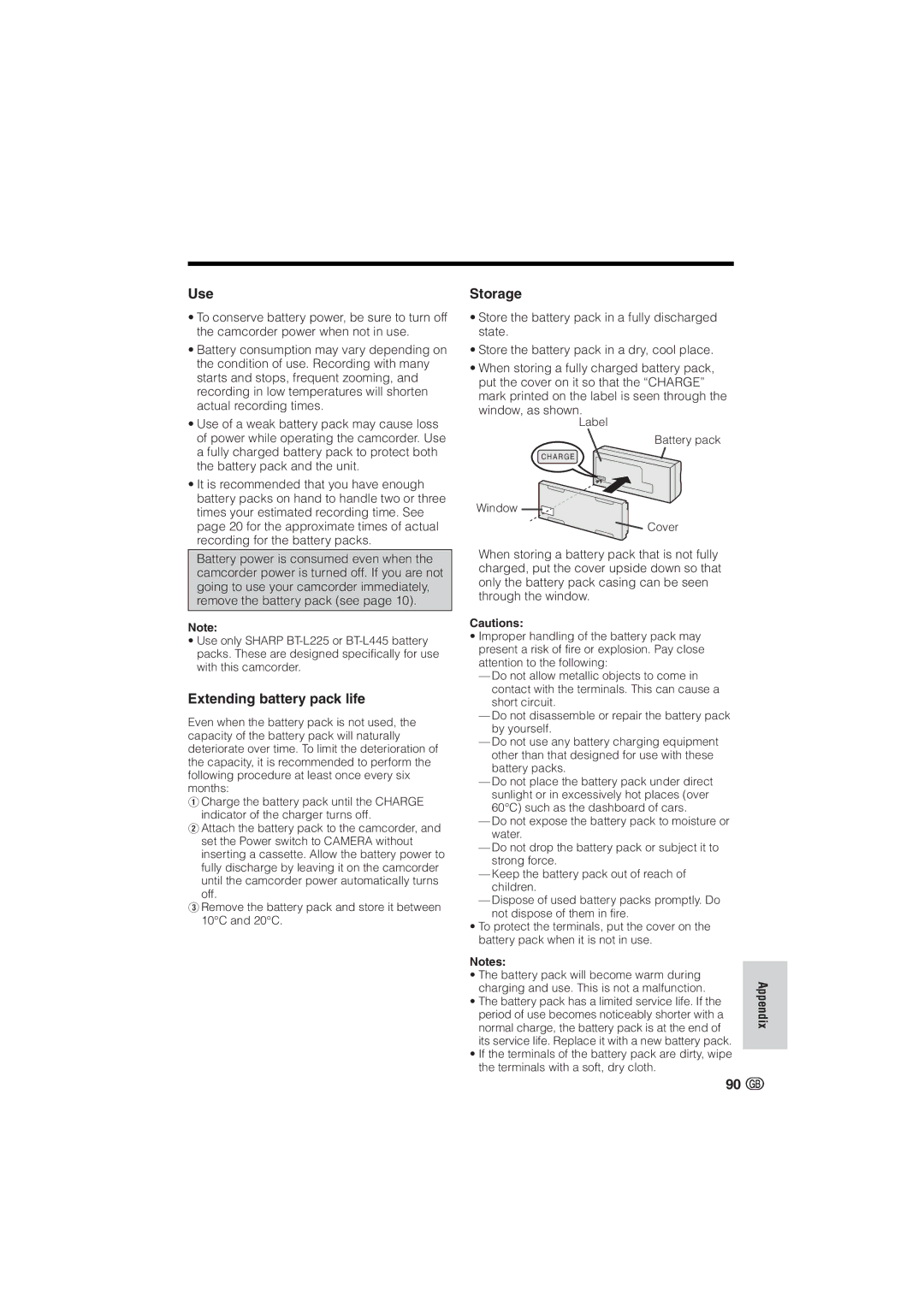
Use
•To conserve battery power, be sure to turn off the camcorder power when not in use.
•Battery consumption may vary depending on the condition of use. Recording with many starts and stops, frequent zooming, and recording in low temperatures will shorten actual recording times.
•Use of a weak battery pack may cause loss of power while operating the camcorder. Use a fully charged battery pack to protect both the battery pack and the unit.
•It is recommended that you have enough battery packs on hand to handle two or three times your estimated recording time. See page 20 for the approximate times of actual recording for the battery packs.
Battery power is consumed even when the camcorder power is turned off. If you are not going to use your camcorder immediately, remove the battery pack (see page 10).
Note:
•Use only SHARP
Extending battery pack life
Even when the battery pack is not used, the capacity of the battery pack will naturally deteriorate over time. To limit the deterioration of the capacity, it is recommended to perform the following procedure at least once every six months:
1Charge the battery pack until the CHARGE indicator of the charger turns off.
2Attach the battery pack to the camcorder, and set the Power switch to CAMERA without inserting a cassette. Allow the battery power to fully discharge by leaving it on the camcorder until the camcorder power automatically turns off.
3Remove the battery pack and store it between 10°C and 20°C.
Storage
•Store the battery pack in a fully discharged state.
•Store the battery pack in a dry, cool place.
•When storing a fully charged battery pack, put the cover on it so that the “CHARGE” mark printed on the label is seen through the
window, as shown.
Label
Battery pack
C H A R G E
Window
Cover
When storing a battery pack that is not fully charged, put the cover upside down so that only the battery pack casing can be seen through the window.
Cautions:
•Improper handling of the battery pack may present a risk of fire or explosion. Pay close attention to the following:
—Do not allow metallic objects to come in contact with the terminals. This can cause a short circuit.
—Do not disassemble or repair the battery pack by yourself.
—Do not use any battery charging equipment other than that designed for use with these battery packs.
—Do not place the battery pack under direct sunlight or in excessively hot places (over 60°C) such as the dashboard of cars.
—Do not expose the battery pack to moisture or water.
—Do not drop the battery pack or subject it to strong force.
—Keep the battery pack out of reach of children.
—Dispose of used battery packs promptly. Do not dispose of them in fire.
•To protect the terminals, put the cover on the battery pack when it is not in use.
Notes:
•The battery pack will become warm during charging and use. This is not a malfunction.
•The battery pack has a limited service life. If the period of use becomes noticeably shorter with a normal charge, the battery pack is at the end of its service life. Replace it with a new battery pack.
•If the terminals of the battery pack are dirty, wipe the terminals with a soft, dry cloth.
Appendix
90 ![]()
